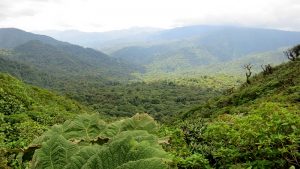In 1950 there were about 2000 gibbons that lived on the Chinese island of Hainan. But 20 years later, due to poaching and loss of their natural habitat, there were only between 7 and 9 specimens left.
Now hope for this primate is rekindled. Now there are more than 30 gibbons living on the island and one male and one female have just created a new family, raising expectations that the population may continue to grow.
The entire population of Hainan gibbons is located in a 1,600 hectare forest areat in the Hainan Bawangling National Nature Reserve. Last year, local villagers reported seeing a male and female gibbon together that appeared to have started a stable relationship. This can be understood in a very simple way since the females have golden fur (males have balck fur) and in the reproductive period, if the couple is stable, they sing together.
The discovery of this important new couple was made known in a study, by Bosco Pui Lok Chan and Yik Fui Philip Lo of the KFBG and Yanni Mo section of the Forestry Department in the province of Hainan.
“Even though the numbers are still small, you can see a future for this animal,” said in a statement senior conservation officer Philip Lo Yik-fui of Hong Kong-based Kadoorie Conservation. “They are really intelligent animals. When they look at you, it feels like they are trying to communicate,”.
The NGO Kadoorie Conservation began monitoring the gibbon population to prevent poaching and learn more about the species, but also took care to plant more than 80,000 fruit trees to help recreate their natural habitat and help them survive.
Of course, there is still much to be done to avoid the risk of extinction of these very particular primates. First of all it is important to encourage population growth by increasing forest cover and by securing these gibbons can thrive in their natural habitat.






